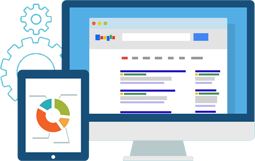
Making a Website Friendly for the Hard-of-Hearing
Making a website design in Los Angeles more inclusive for hard-of-hearing people involves implementing several strategies to ensure that they can access and understand the content on the site. Approximately 466 million people worldwide have hearing loss, meaning website owners are responsible for ensuring that their sites are accessible to everyone, regardless of their abilities. Below are some strategies to make websites more inclusive for hard-of-hearing people.
1. Provide Captions and Transcription for Audio and Video Content
Providing captions and transcripts for all audio and video content on a website is a crucial step. They help with making your content more inclusive for hard-of-hearing people. Captions and transcripts allow hard-of-hearing people to follow the content and understand it. Captions should be displayed clearly; text should contrast nicely with the background to make it easier to read. Automated captioning tools are available–however, they may not always be accurate. It is still best to have a human transcribe the content to ensure accuracy.
2. Ensure that the Website is Compatible with Assistive Technologies
Assistive technologies such as speech recognition software and screen readers are essential for hard-of-hearing people to access and understand website content. To make the website more inclusive, these assistive technologies should be taken into consideration during the website building. This can be done using semantic HTML, which provides a clear and logical structure to web content, making it easier for assistive technologies to interpret.
3. Use Simple Language and Clear Fonts
Simple language and clear fonts can make a significant difference in creating a website more accessible for hard-of-hearing people. The font should be easy to read, having good contrast between the text and the background. The language utilized on the website should be simple, concise, and easy to understand, which can help hard-of-hearing people follow the content quickly.
4. Offer Visual Cues
Offering visual cues can make a website more inclusive for hard-of-hearing people. Visual cues can include images, graphics, and icons that provide context and help users understand the content. Visual cues can also help hard-of-hearing people follow the content by providing additional information to supplement the text.
5. Provide a Sign Language Interpreter
Providing a sign language interpreter can make a website more inclusive for hard-of-hearing people who use sign language as their main mode of communication. Depending on the website’s resources, a sign language interpreter can be provided through video or live chat.
6. Use Audio Descriptions
Audio descriptions can help hard-of-hearing people understand the visual content of a website. They describe the visual elements of a video or image, allowing hard-of-hearing people to understand the content better. Audio descriptions should be clear and concise, describing only essential details.
Conclusion
In conclusion, making a website more inclusive for hard-of-hearing people involves several strategies, such as providing captions and transcriptions for video and audio content, ensuring compatibility with assistive technologies, using simple language and clear fonts, offering visual cues, providing a sign language interpreter, and using audio descriptions. By implementing the above strategies, website owners should have websites accessible to everyone, regardless of their abilities.
Drive Traffic Media, a digital marketing agency in Los Angeles, can create a perfect website for your customers, including your hard-of-hearing ones. Reach out to us at (949) 800-6990 or (310) 341-3939 to get started.

